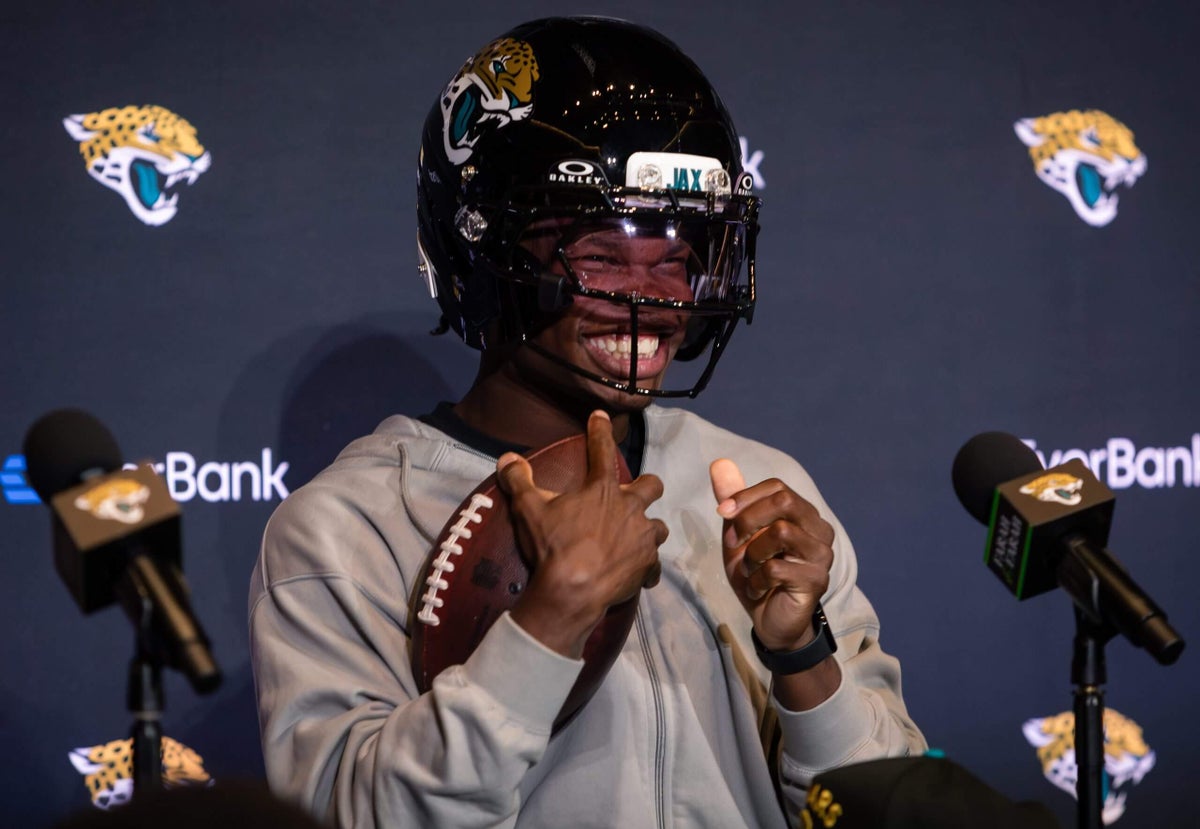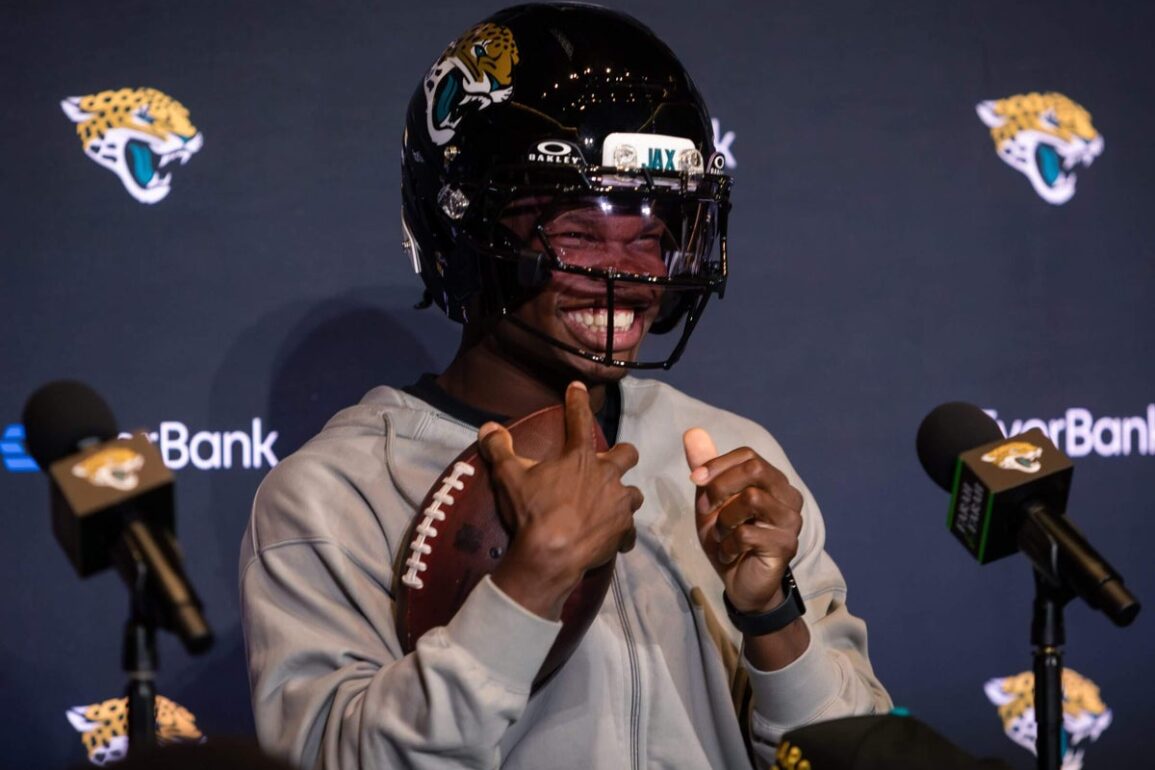
There hasn’t been a non-quarterback who has entered the NFL with more hype than Travis Hunter in a long time. The reigning Heisman Trophy winner comes to the Jacksonville Jaguars as the second overall pick with a boatload of talent, a shelf full of individual accolades and the intent to continue playing on both offense and defense.
Advertisement
That last part has also made Hunter the most hyped rookie in fantasy football in recent memory — especially in IDP leagues. With Hunter’s role in Jacksonville still somewhat uncertain, many fantasy football game providers have decided to make him eligible as both a cornerback and a wide receiver. That creates the possibility for much more than just a “loophole” fantasy asset — it creates the potential for a player who could wreak havoc in IDP leagues in 2025.
No two ways about it
Last year at Colorado, Hunter played 1,484 snaps, split just about evenly between cornerback and wide receiver. The 6-foot, 188-pounder has insisted from the jump he wants to continue playing both ways in the NFL and that he’s capable of playing a heavy snap count at the professional level.
“[I want to play] both. Just like you saw me play [in college],” Hunter said on SiriusXM NFL Radio. “[I could play] all of them [the snaps] if they gave me the chance and the opportunity to do it.”
For what it’s worth, Colorado head coach Deion Sanders, who played some wide receiver in the NFL in addition to cornerback, told the NFL Network he absolutely believes Hunter can be the first true two-way player in the NFL since Chuck Bednarik retired in 1962.
“The NFL is a slow game,” Sanders said. “You huddle [every play]. How is the contact nowadays? Minimal. That game is more conducive to him being successful than a college game. College is tempo, tempo, tempo. Now, you’re talking about you have to be in shape. Pros, how many seconds between plays? Please, he’s going to go jogging after the darn game because he’s going to have all that energy, man. He is built for this.”
There’s just one small problem. Hunter isn’t playing both ways in the NFL. Not full-time. There are reasons why it hasn’t been done in over six decades, and it’s not because no one thought of it.
Advertisement
For starters, success in the NFL at one position requires a tremendous amount of preparation and practice. The leap in competition from college to the pros is an immense one. Even the most talented youngsters have to bust their butts on the practice field to star in the NFL. What happens when the wide receivers and cornerbacks have meetings at the same time? Are the Jaguars going to adjust the team’s entire practice schedule to accommodate one player? Never mind the limits on practice time that are part of the collective bargaining agreement. Sure, Hunter can work out and watch film on his own, and he can say he’ll spend every waking moment focused on football. But that’s just not realistic.
There are also the not-insignificant physical demands of the NFL. Last year at Colorado, Hunter averaged just over 114 snaps a game. Over a 17-game season, that would equate to a staggering 1,941 snaps — over 35 more snaps per game than anyone in the NFL played last season. This isn’t a mediocre Colorado team in a mediocre Big 12 taking on the likes of North Dakota State, Colorado State and Baylor. Every player Hunter will face in every game from here out was a star in college. Hunter may be in phenomenal shape, but he’s not a cyborg. He’ll wind up gassed.
Take a play off at cornerback because the tank’s empty, and Hunter will get roasted. Take a play off at wide receiver, and he’ll be George Pickens. (Hey-O!)
Joking aside, playing a ludicrous number of snaps is also going to increase the chances Hunter gets hurt. In fact, at least one NFL executive told Mike Sando of The Athletic he expects to whole two-way thing to get nixed as soon as Hunter winds up sidelined for multiple weeks by an injury.
“I can’t name a dual-threat guy who played both ways at the level they are drafting him at,” the exec said. “Deion Sanders? Rod Woodson? They all settled into whatever their position is. As soon as he gets one injury and is out for three weeks, he is going to one side of the ball.”
Advertisement
The Jaguars appear to understand this. The team has made it clear their early intent is to onboard Hunter as a wide receiver, with some cornerback sprinkled in. This is admittedly speculation, but this writer expects that to continue through at least Hunter’s rookie year — it will be an upset if he spends less than 3/4 of his snaps he plays in 2025 at wide receiver.
Fantasy fallout
That may well be a reasonable expectation for Hunter’s playing time splits this season, but for many IDP providers, there’s enough uncertainty about how much Hunter will play on each side of the ball that they have given him dual-eligibility. And after running some numbers for a column about Hunter last week at Footballguys, it didn’t take long to figure out that in those formats, Hunter has the potential to be a league-wrecker. In fact, he could be a force in leagues where he’s just classified as a wide receiver, provided he gets points for plays made at cornerback as well.
The latter is the case at My Fantasy League, where Hunter is classified as a WR but can score points for tackles, interceptions and passes defensed as well. Last year, the WR40 in PPR points (Pickens, because life is a circle) averaged about 12 fantasy points per game. The 60th-ranked cornerback in a fairly straightforward IDP league (Green Bay’s Jaire Alexander) averaged about eight fantasy points per game.
By my math, that’s 20 points per game. Care to guess how many wide receivers averaged 20 points per game last year over the entire season?
One — Ja’Marr Chase.
This isn’t to say Hunter will be the WR40 in 2025. Or the CB60. But those aren’t unreasonable projections, and they show the sort of elite fantasy upside Hunter has as a wide receiver in IDP leagues.
As a cornerback or defensive back? Hunter is a Limp Bizkit song.
Advertisement
At Yahoo, ESPN and Fleaflicker, Hunter is eligible to be started in IDP leagues as a cornerback. Last year, there was one cornerback who averaged over 13 fantasy points a game — and he missed half of the season. There have been two corners over the past five seasons combined who have averaged 15 fantasy points per game. If Hunter comes anywhere close to where he’s projected here, he wouldn’t just be the No. 1 cornerback in 2025, he’d be the top guy by a sizable margin.
It’s not just the points, either. It’s the consistency. Cornerbacks are easily the most high-variance players in IDP leagues from week-to-week. Starting a player who is essentially a wide receiver in a cornerback spot offers a fantasy floor no other corner can hope to match.
In IDP leagues that require cornerbacks where Hunter is eligible at the position, he’s the top option available, and it isn’t especially close.
Sleeper doesn’t differentiate between cornerbacks and safeties, so on their site, Hunter is dual-eligible as a wide receiver and defensive back. If you add safeties to the mix, there were all of three safeties (Budda Baker of the Arizona Cardinals, Nick Cross of the Indianapolis Colts and Brian Branch of the Detroit Lions) who averaged over 15 fantasy points per game in 2024. The year before that there were four. There were two in 2023. And over that three-year span, one defensive back averaged 17.5 fantasy points per game.
If Hunter comes anywhere close to that 20-point threshold, he won’t just be the No. 1 cornerback, he’ll be the No. 1 defensive back. In fact, there has been only one defensive player at any position who has averaged 20 fantasy points a game over the past three years — Jaguars teammate Foyesade Oluokun in 2022 and 2023. And again, if Hunter plays predominantly wide receiver but has IDP eligibility, he’s going to be every bit as consistent as an elite linebacker.
That’s right, we could be talking about a “cornerback” as the No. 1 IDP overall.
Ready for the bad news? Come on, you had to know there was bad news.
Advertisement
Hunter’s potential in IDP leagues isn’t exactly a state secret. Fantasy managers have been salivating about this possibility for months, and Hunter playing most of his snaps at wide receiver while keeping defensive back eligibility is the best-case scenario for his fantasy value. At My Fantasy League, Hunter is going to be drafted as a WR1 more often than not. At other providers, he’s going to be one of the first IDPs drafted — maybe the first. And for all his upside, he’s still a rookie with a somewhat uncertain role.
There are no guarantees in fantasy football. But if ceiling and upside (and IDP) is your game, then Travis Hunter is a player who should be on your target list when draft season rolls around. If Hunter is half the talent so many believe he is and he can come close to meeting the expectations set forth here, he’ll be arguably the biggest “cheat code” player fantasy football has ever seen, and well worth his lofty asking price.
If he somehow exceeds those expectations? Well, that’s another song altogether.
Follow Gary Davenport on X at @IDPGodfather.
(Top photo of Travis Hunter: Travis Register / Imagn Images)
This post was originally published on this site be sure to check out more of their content.









